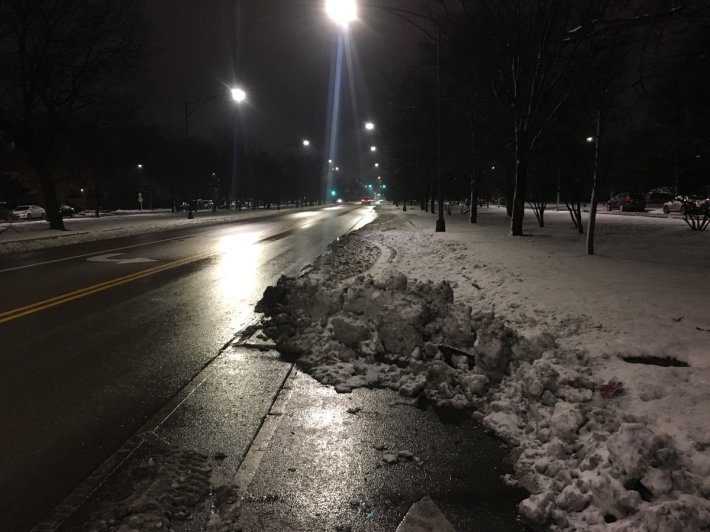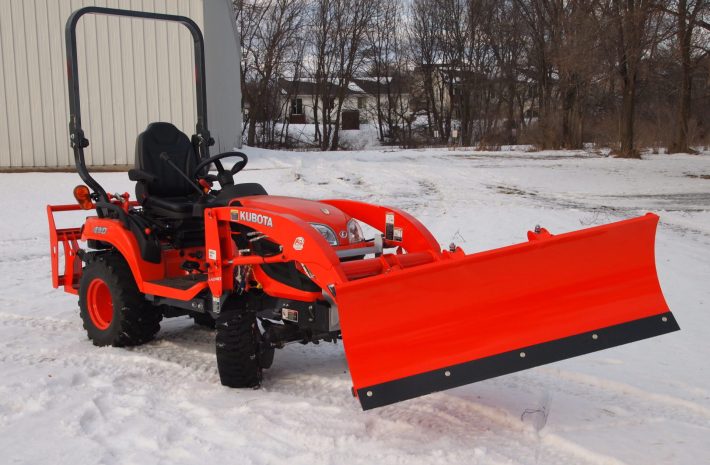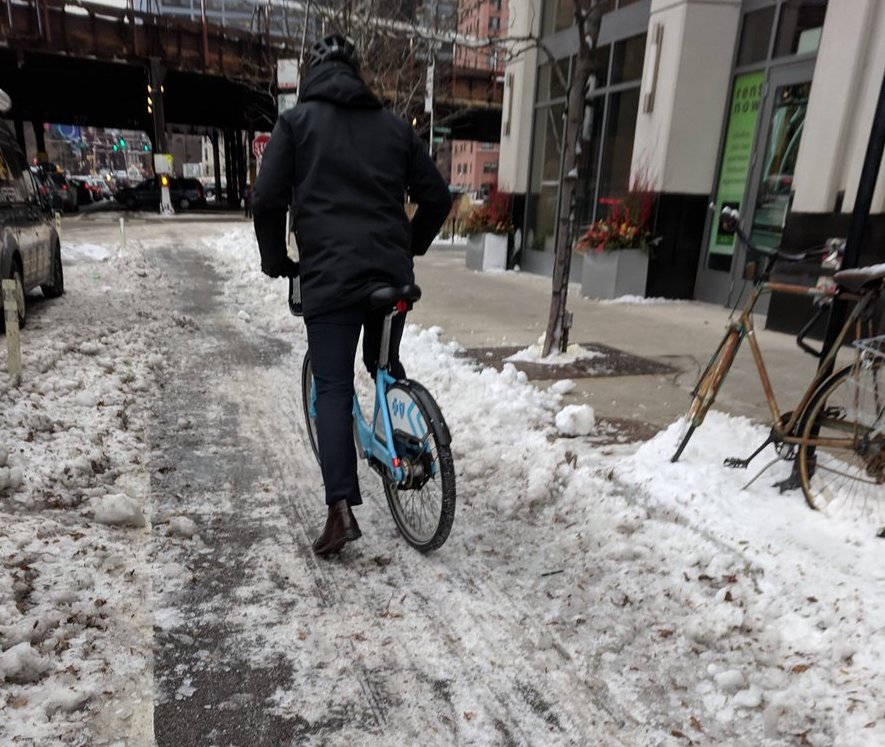Chicago bus and car commuters generally gave positive reviews to the city's response to last week's early-morning, 8.3-inch snowfall -- travel lanes on main arterials were clear a few hours into the workday. But bike commuters were less impressed. They reported that, more than a day after the storm ended, portions of key protected bike lane routes like Milwaukee, Dearborn, and Kinzie were still impassible. And Streetsblog's Steven Vance noted that on the fourth day after the snow fell, sections of the protected lanes on Franklin Boulevard in East Garfield Park were still completely unplowed.
While Streets and Sanitation is generally responsible for clearing the roads, the Chicago Department of Transportation, which constructs the city's on-street bikeways, is responsible for snow removal in bollard-protected bike lanes. Late last week CDOT spokesman Mike Claffey provided a full explanation of the department's approach to clearing the lanes.

"Wintertime maintenance of bike lanes is a collaborative effort between CDOT and the Department of Streets and Sanitation," Claffey said via email. "DSS is responsible for clearing streets in Chicago, including roads with buffered bike lanes, standard bike lanes, marked shared lanes [bike-and-chevon symbols], and neighborhood greenways. In those areas where the delineators (bollards) [on protected bike lanes] have been removed, DSS plows the street as part of their snow clearing effort."
However, Claffey said, on protected bike lanes where the flexible posts are not removed during the winter because they're needed "for safety reasons," CDOT is responsible for plowing. (Many cyclists would argue that none of the bike lane bollards should be removed during the winter, since they help keep cars out of the lanes, and they're sometimes not reinstalled in the spring.) The same goes for lanes such as the ones on portions of Milwaukee, Elston, Clybourn, Dearborn, 31st Street, and Sacramento Boulevard, with concrete protection.
"Our goal is to clear the snow within 24 hours of a snowfall ending," Claffey added. "DSS and CDOT coordinate snow removal operations -- but because the bike lanes require special equipment for removal, the process can take a little longer." To clear bike lanes, CDOT uses pick-up trucks with plows, plus small snowplows manufactured by Bombardier, and Kubota. (It would be great if the city also used these devices to clear sidewalks on a widespread basis.)

Claffey said the department encourages citizens who encounter blocked bikeways to call 311 or go online to the 311 service request webpage and report the obstruction as "Snow -- Uncleared Sidewalk or Bike Lane." I'd add that cyclists should also report blockages on the civilian-run Bike Lane Uprising website, which documents bike lane obstructions.
He added that one challenge to keeping protected lanes clear is that maintenance workers sometimes shovel snow from the sidewalk into them, which is a violation of Chicago’s snow clearing ordinance. (Instead, sidewalk snow should be piled on the sidewalk near the curb, in the "street furniture zone," with occasional clear spots left to make it easier for people to travel between parked cars and the sidewalk.) "If we are informed of this, we will send crews out to clear [the bike lanes] again. We also issue warnings and can fine businesses that push snow into bike lanes."
While it's a drag that the city has lower standards for promptly clearing protected bike lanes compared to mixed-traffic lanes, the Active Transportation Alliance's Kyle Whitehead argued that cyclists should hate the game -- a city transportation system that prioritizes motor vehicles -- not the players. "This is about resources," he said via email. "City agencies need the money for staff and equipment to identify where snow is piling up and remove it quickly from bike lanes. There’s little dedicated funding for building and maintaining biking and walking facilities citywide, which is why we’re pushing for a Chicago Bike Walk Fund."






